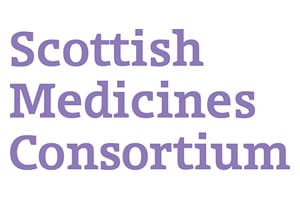
The Scottish Medical Consortium has enabled access to Japanese pharma Kyowa Kirin’s Crysvita, a novel treatment for a rare inherited bone disease.
Crysvita (burosumab) will now be available in the NHS in Scotland for the treatment of X-linked hypophosphataemia (XLH) in children with radiographic evidence of bone disease, aged one year and older and adolescent with growing skeletons.
XLH is usually first observed in infants and is characterised by bowed or bent legs, a short stature, bone pain and delayed walking. It is caused by low levels of phosphate in the blood, and results in life-long physical disabilities.
Kyowa Kirin’s drug is the first treatment to target the underlying cause of XLH – Crysvita is an anti-FGF23 monoclonal antibody (mAb).
It works by blocking the FGF23 protein, which restores phosphate blood levels by reducing its loss via the kidneys and increasing the production of vitamin D, which improves intestinal absorption of phosphate and calcium.
“This is important news for children and young adults with XLH in Scotland, who will now be able to benefit from Crysvita,” said Oliver Gardiner, founder and trustee of XLH UK.
“Access to a treatment that tackles the underlying mechanism and has the potential to avoid or mitigate substantial physical and emotional challenges, will truly make a difference to the lives of people with XLH and their families,” he added.
England’s cost-effectiveness watchdog NICE issued a positive recommendation for the drug back in 2018, not long after Crysvita was granted a conditional marketing authorisation from the European Medicines Agency.
The SMC evaluated Crysvita under the ultra-orphan pathway, a new system for the consideration of novel treatments for extremely rare diseases.
Under this framework, eligible children in Scotland will be able to access Crysvita while Kyowa Kirin collects additional data, to address any areas of uncertainty.
After three years, the SMC will review the new evidence and make a final decision on its routine use on NHS Scotland.
The initial assessment and access agreement is based on data from the phase 3 UX023-CL301 study, which evaluated Crysvita in 61 children aged one to 12 years old with XLH. The trial evaluated Crysvita in comparison to conventional therapy with oral phosphate and active vitamin D.
Results from that study demonstrated a significant improvement in the primary endpoint of rickets healing at 40 weeks compared to conventional treatment. Additional improvements were observed in serum phosphate levels, linear growth and physical function.
In addition to XLH, Kyowa Kirin and partner Ultragenyx recently submitted Crysvita to the US Food and Drug Administration for approval in FGF23-related hypophosphatemia associated with tumour-induced osteomalacia (TIO) that cannot be curatively resected or localised.
An application for the extended use of Crysvita in adults with XLH is also currently under review by the EMA.




